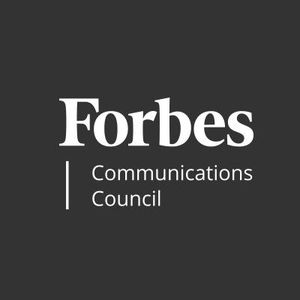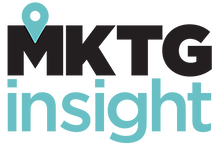
Marc Iskowitz. July 16, 2021
Historically, advertising holding companies have not always maintained the most cordial of relations with each other. They perennially battle for talent and frequently skirmish over client work, both of which have a way of fueling old rivalries and keeping executives at arm’s length.
Yet an initiative involving three of the world’s biggest ad holding companies by revenue belies the tribalism that often characterizes this industry. WPP, Omnicom and Interpublic, along with consumer agencies Doner and Vayner, have joined forces, with the blessing of client Johnson & Johnson. They aim to share successes and failures, pitfalls and opportunities as the healthcare marketing sector strives to increase the diversity of its teams and the inclusion within its walls.
Members of J&J’s agency team who spoke with MM+M said the sector may be playing catch-up when it comes to a comprehensive approach to diversity, equity and inclusion. Partnering represents one way brands and agencies can make up ground.
“We have an incredibly long road ahead of us, but the ideas that come out of the calls with our various HR teams are already part of how we’re going to market, both on a macro basis and locally,” says Stuart Klein, VP and healthcare practice lead at IPG. The willingness to share “is about, ‘How do we inspire each other to do better?’” he adds.
The intel-swapping includes what’s worked (and what hasn’t) with respect to employee resource groups, interview techniques, levels of diversity needed when staffing teams and lists of diverse suppliers. Among agencies, most of whom define themselves by their cultures and talent differences, this kind of information normally would rise to the level of a state secret.
The partners stress that nothing strictly proprietary or even in the incubation stage has been or will be revealed. At the same time, there appears to be an unusual degree of candor in the conversations that have taken place to date.
“That openness around building cultures of inclusivity has been refreshing and valuable, and made us all better more quickly at creating environments where people that come from diverse backgrounds are going to feel more welcome, more heard, more supported and more likely to remain,” says Patrick Wisnom, WPP’s global client lead for J&J.
All three were asked to adopt “micro-charters” that support the company’s DE&I strategic approach, recalls Manoj Raghunandanan, president of the global self care and consumer experience organization at J&J’s consumer health unit. The drugmaker also rallied its global media partners — including monoliths such as Google, Facebook and Amazon — to do the same.
“Successfully changing the marketing industry requires partnership,” Raghunandanan explains. “Now, our procurement team is collaborating closely with our agency partners and meeting regularly to make near real-time adjustments.”
For his part, Klein is impressed by the camaraderie. “We have become a kind of macro holding company as it relates to achieving these initiatives,” he says. “I’ve been doing this for almost 40 years. I have never seen anything even close to this in terms of holding company collaboration.”
Considering the current state of DE&I in the industry, efforts to improve it will take nothing less than an unprecedented level of cooperation. The C-suites at WPP, Omnicom, IPG, Publicis and Dentsu were between 82% and 85% white, according to a 2020 report from the Association of National Advertisers. The ANA also found that only 3% of 870 chief marketing officers were Black, 5% were Asian and 4% were Hispanic.
The tragic killing of George Floyd in May 2020, along with the pandemic’s disproportionate impact on mortality in communities of color, put greater focus on the need to improve DE&I in the workplace. Many agencies and advertisers pledged to up diverse representation, particularly in the C-suite.
Last June, 600 Black advertising professionals issued an ultimatum to the predominantly white industry, in a “call for change” letter that called for more Black hiring at the top. While momentum seemed to be mounting in the 13 months that have followed, the reality is that progress has been painfully slow.
“We’ve seen a handful of hires, which I’m excited about, but truth be told we’ve not seen much change,” says Walter Geer, executive creative director at the WPP agency VMLY&R, and one of a handful of Black agency creative leaders. “And that’s simply because the conversation has died out. People have short-term memories. The longer you wait, eventually people forget.”
Geer has spent much of the past year reviving discussion by engaging agency bosses in dialogue about the lack of opportunity for Black and brown people. Gary Vaynerchuk, for instance, told Geer he intended to add two diverse hires to his senior leadership team by Q1 of this year. After that deadline came and went, Geer took to social media to hold him to his pledge; Vaynerchuk soon made good on his promise, hiring three diverse leaders.
Shareholders similarly want to hold companies accountable for racial pledges they made in the wake of Floyd’s death and the #BlackLivesMatter protests that followed, not to mention the mountain of academic research showing that diversity adds value. To that point, J&J is among the large U.S. corporations that investors would like to see conduct a racial equity audit and issue annual diversity reports. After shareholders filed a proposal for the company to take such action, the drugmaker claimed that it is already taking steps to address racial justice and asked the U.S. Securities and Exchange Commission to block the votes.
Others agree that diversity numbers don’t tell the whole story. James Kinney, global chief DE&I officer and chief people officer for North America at Ogilvy, also part of WPP, says he prefers to focus on percentage improvement rather than straight percentages, since attrition is part of the ad business. A 20-year veteran who has helped other companies upgrade their diversity practices, Kinney’s advice is to eschew specific targets.
“I don’t want anyone to feel like they were part of a goal,” he explains. “What I do want is an incredible global culture where everyone feels like they belong.”
Indeed, it’s hard to quantify the opportunity for cultural transformation that now lies at the industry’s doorstep. “We see this more as inclusion, belonging and enhancing everyone’s experience,” Kinney adds.
Since his arrival, Ogilvy has gone from having eight to nearly 20 employee resource groups. The professional networks, Kinney believes, help ensure that “there’s a place for everyone to have what we would call hyperlocal or hyperculture within the agency.”
Diversity data are largely just numbers on a page, anyway. If a person of color walks into a room or joins a Zoom call with people they work with, they’ll immediately feel whether their organization is a culturally diverse one or not.
Eric Jones, a producer/editor at Omnicom’s Snow Companies, says he’s encouraged by the greater attention his agency is paying to DE&I. “But hiring people of color is just a first step,” he cautions. “The hard part becomes, ‘What is the workspace like?’ Once we start integrating the workplace more, are companies prepared to accommodate people of color?”
Asked for examples of concrete progress, Charles Dixon, a creative director at Evoke, cites the firm’s internship program, which is more than 50% diverse. But what he finds more interesting is that potential job candidates are explicitly asking about the company’s DE&I efforts during interviews.
“It’s no longer just your standard, ‘What’s the salary and benefits package?’ It’s, ‘What is your company doing to support diversity?’” Dixon notes. “To me, that’s one of the biggest signs of progress: When diversity becomes more than just a talking point but a tangible benefit, like 401(k) and personal time off. And candidates expect companies to have tangible examples of it. If not, we’re the ones missing out on that talent.”
Still, others are disheartened that many of the recent strides have manifested themselves at the junior level. Such staffers need to feel supported so they feel comfortable speaking up and bringing their authentic selves to work, says Angela Williams, a copy supervisor at IPG’s Area 23.
“Without a balance of power at the senior levels, you don’t have that environment. People don’t feel confident telling the truth or presenting an idea because the person to whom they’re presenting doesn’t have the context to interpret it,” Williams explains, adding that a diversity shortfall in the leadership ranks influences the type of work that agencies do and the type of talent they attract.
Entry-level recruiting and hiring is clearly important. But without progress at both ends of the career ladder, the conditions won’t be ripe for non-white people to progress.
The data bear that out. Research among the Black workforce, for instance, shows that Black leaders are more likely than white ones to leave their organizations. Other studies point to Black workers feeling less supported, engaged with and committed to their jobs than their non-Black peers.
“I can’t stress the importance of this enough: When you don’t see someone who looks like you who’s more senior, you eventually leave,” Geer says.
Progress is also slow in hiring people from outside the industry. Most higher roles, such as EVP and SVP, continue to be filled through preexisting relationships, Geer observes. To start attracting diverse talent for more senior positions, health agencies need to understand that not all people need to come from the same types of companies.
“We do a bad job of finding talent because we have this feeling that only agency people can work at an agency, and only people who’ve done HCP can work on HCP,” Geer continues. “That’s not the case at all.”
The J&J partnership, which grew out of the drugmaker’s earlier DE&I commitments, seeks to improve on that situation. The company wanted to take a more public stance.
First came a $10 million, three-year commitment to fighting racism and injustice that CEO Alex Gorsky announced in a letter to employees in June 2020. Then came November’s DE&I initiative, entailing a five-year, $100 million pledge to fight health inequities for Black people and other communities of color in the U.S. One industry pundit characterized it as “the most comprehensive [DE&I] commitment to date that has been announced within the pharmaceutical industry.”
Beyond vowing to increase Black representation in its upper echelons, the three-pronged plan included providing equitable care for underserved communities, initiatives to increase diversity in clinical trials and forge stronger partnerships with health systems, and pledges to support Black- and Hispanic-owned businesses. The drugmaker’s consumer unit also signed onto the ANA Alliance for Inclusive and Multicultural Marketing pledge, the signatories of which promised to hold themselves accountable to a number of practices aimed at elevating multicultural marketing.
Clients want a workforce of writers, directors and photographers that mirrors the diversity of their customer base. “What [clients] get is better work, because we will have better teams as a result of having more diversity,” Wisnom says. The unified approach is also more efficient than asking individual agencies to share diversity plans.
Another goal involves increasing the pool of diverse candidates being interviewed, according to WPP VP and commercial director Lisa Berotti.“How do we go to market for HBCUs [historically Black colleges and universities] that we haven’t been able to reach before? How do we partner externally with groups such as the AEF [the ANA Educational Foundation] to connect with those campuses?” she asks. “We’ve been able to bring subjects like that forward. And instead of each agency holding company recreating the wheel, we leverage past experience to propel each other forward.”
Just as importantly, the companies are sharing information to ensure that, as more people of color join the business, they feel comfortable, see paths for growth and future success, and connect with role models and mentors.It didn’t take much convincing for the major agencies to move from warring factions (“we’ve been in rooms together before, and there are always walls,” Wisnom says) to DE&I teammates. In fact, it took one phone call to each of the holding company leads, and that was that. “There was no secret to it,” Wisnom recalls. “We basically invited everyone to a discussion: ‘This is what we’re trying to do.’” Klein says he was most inspired by the potential to “cross-pollinate” learnings that arose from the group sessions among other agencies and client teams.
J&J Consumer Health chief procurement officer William Gunn says the drugmaker is sharing its framework with other companies to reference as they look to establish similar programs that drive change. The drugmaker also encouraged the agency holding companies to share the framework with other clients as needed.
The agency team knows that its DE&I efforts ultimately will be measured by hard metrics — specifically, the workforce diversity data which, across the ad industry, is woefully low at present. But even if it fails to achieve its aggressive goals, the collaborative effort can still make a difference.
“We’re at the beginning of the journey. And right now, what we’re focused on is the intent and the commitment to making a difference,” Wisnom says.
Meanwhile, Geer laments that the industry is not seeing a real influx of people of color. Rather, it’s merely trading the same small handful of folks from one agency to the next.
He adds that this is going to become even more of a problem. With most agencies making plans for a September return to the office, many are weighing whether their employees need to come in or if they can work permanently from home. As that situation shakes out, Geer anticipates a huge play for talent, which may serve to exacerbate the dearth of diversity in the space.
“By the end of this summer, we are going to see a mass exodus — of all talent,” he predicts. “When [holding companies] report on their diversity numbers in January, many may see a significant decline if they don’t figure out what to do now.”
His recommendation? Identify the POC talent that’s already in-house, and promote those individuals and/or pay them fairly. “If you want talent there, you have to figure out how to make them happy,” Geer says. Otherwise, come early 2022, “Diversity numbers may end up in poorer shape, and the blame will shift to back-to-the-office instead of ensuring that you’re keeping the talent there and doing what’s best for them to want to be there.”
When it comes to diversity, the long game is just as important. Dixon draws inspiration from his father, who broke into graphic design in the publishing industry more than 50 years ago. “As a young, African-American male, he was overwhelmingly the minority,” Dixon recalls.
Although his dad’s DE&I experience was vastly different, Dixon says, it nevertheless offers perspective.
“We have come a way. And for better or for worse, we live in a world where companies are functioning as extensions of people,” he notes. “We need to keep pushing for more from each other, because I don’t think the job’s ever truly going to be finished.”








 Alli Romano. February 1, 2024
Alli Romano. February 1, 2024


















